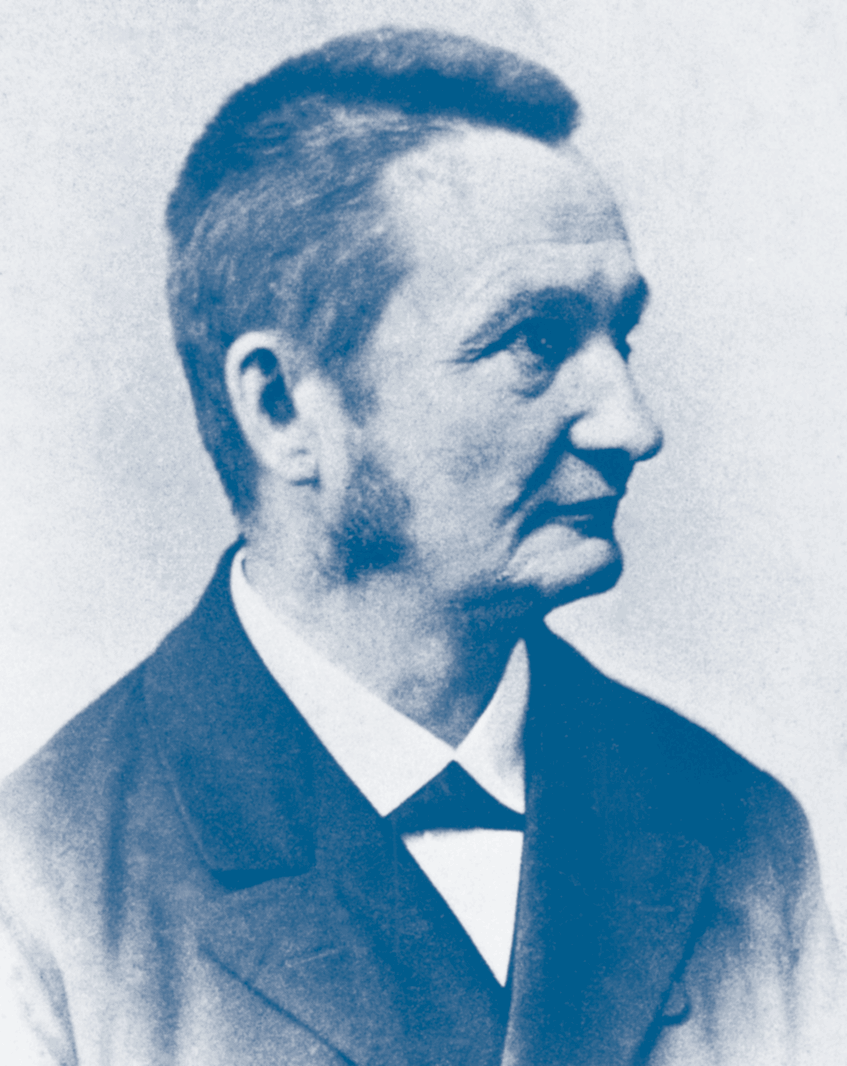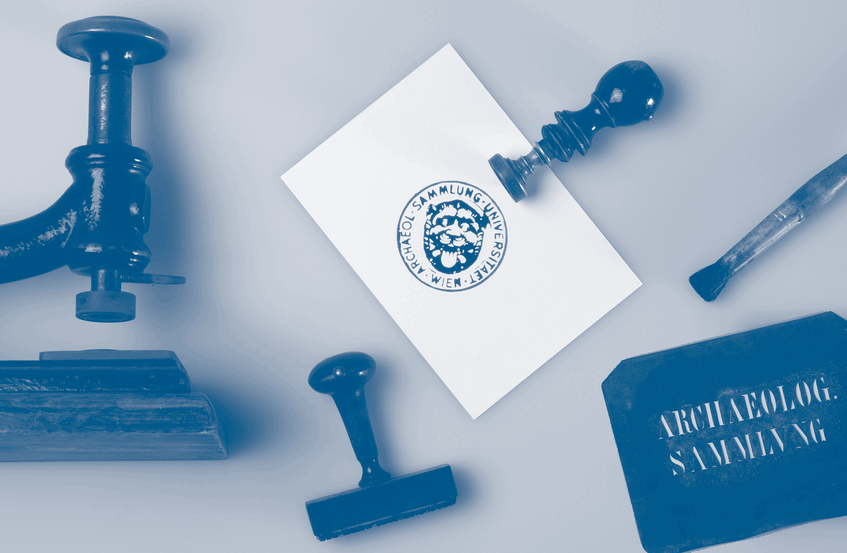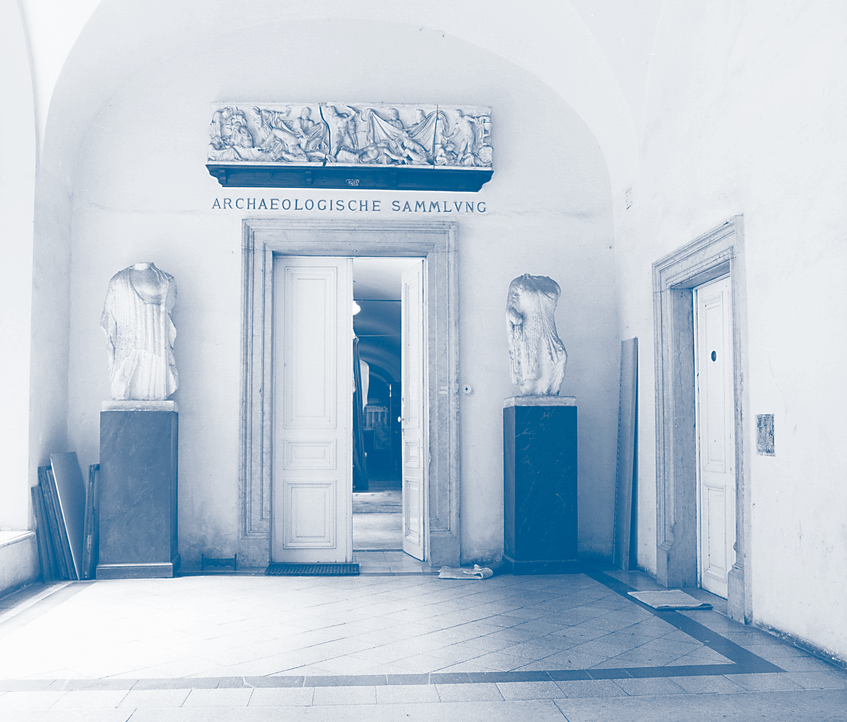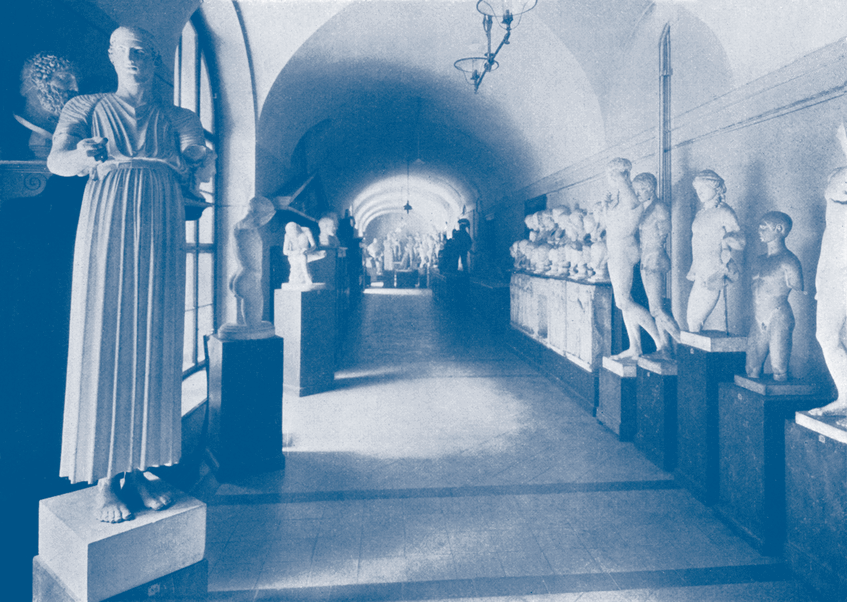
Alexander Conze, Professor at Vienna University from 1869 to 1877

Otto Benndorf, Professor at Vienna University from 1877 to 1898

Stamp of the Archaeological Collection, acquisition in 1890

Entrance to the Collection in the 1960s

Hallway of the Collection in the 1920s
The History of the Collection
The Archaeological Collection goes back to Alexander Conze, the first Professor of Classical archaeology at Vienna University. When first appointed to the new chair in 1868/69, he established himself in the so-called Old University or Jesuit quarter and began to build up facilities for research and teaching; raising funds for books and compendia of artwork, but above all for plaster casts. Conze was used to working with plaster casts from his previous posts at Göttingen and Halle an der Saale, and when he came to Vienna, the city already had two substantial cast collections of ancient art. Firstly, the Academy of Fine Arts housed an “Akademisches Gypsmuseum”, which was intended to serve artistic training but also to familiarise the public with the development of sculpture and to refine its understanding of art. Secondly, the Imperial-Royal Austrian Museum of Art and Industry (today’s Museum of Applied Arts), collected plaster casts, mainly as exemplary models for art students and artisans.
Alexander Conze made use of these Viennese collections for teaching, and did not aim to establish an independent collection. Rather, the collection of the Academy of Fine Arts was to be expanded through purchases by the university, with Conze having the vision of establishing a new museum for all plaster casts someday. The combined collection therefore initially remained at the Academy of Fine Arts, which had moved into its present building on Schillerplatz in 1878. There, casts of antique sculpture were on display together with reproductions of Egyptian and Near Eastern art, but also of more recent periods.
Due to the acquisition of the first casts, 1869 is considered the founding year of the Archaeological Collection, but it was not until 1886 under Conze’s successor Otto Benndorf that the collection was consolidated. By this time, the Archaeological-Epigraphic Seminar had been founded (in 1876), uniting teaching in Ancient History, Epigraphy and Classical Archaeology, and this moved into the new university building on Ringstraße in 1884/85.
A year later in 1886, the university’s casts were removed from the joint exhibition with the Academy. Benndorf wanted a separate collection close to the seminar space, but there were also other reasons for the separation. The first was a lack of space at the Academy, and the second were divergent ideas about the reasons for collecting plaster casts at all, and which criteria the casts should meet. Since Conze had not requested space when the university on Ringstraße had been planned, the newly-independent university collection had to be accommodated rather inadequately on the ground floor of the Ringstraße building. Besides bringing institutional and spatial independence, 1886 was the year in which the post of an Assistant was granted for the collection and in which its inventory books were established. By the time he stepped down from his professorship in 1898 and took over as director of the new Imperial-Royal Austrian Archaeological Institute, Benndorf had succeeded in expanding the collection to over 1,000 objects, containing also a considerable number of ancient original objects, mainly pottery.
In the 20th century, the collection grew intermittently, for instance in the interwar period through the estate of physician and polymath Felix von Luschan or the donation of geographer Eugen Oberhummer’s private collection, but also through other donations in the 1930s and 40s. Although bombs hit the university building, the collection survived the Second World War largely unscathed.
A more significant break came with the separation into two independent university institutes for Ancient History and Classical Archaeology, respectively, in 1984. When the archaeological institute relocated to its present location at Währinger Park in 1988/89, the collection was divided. Part of it became the “Ancient History Collection”, consisting mainly of text-bearing originals, epigraphic squeezes and some casts; while part of it became the “Archaeological Collection”, in which most of the antiquities and casts found their place. Within the Institute for Classical Archaeology, our part of the collection has always been involved in teaching, but in the 1980s and 90s it became the heart of the institute, mostly thanks to Friedrich Brein, who was in charge of the collection for many years.
